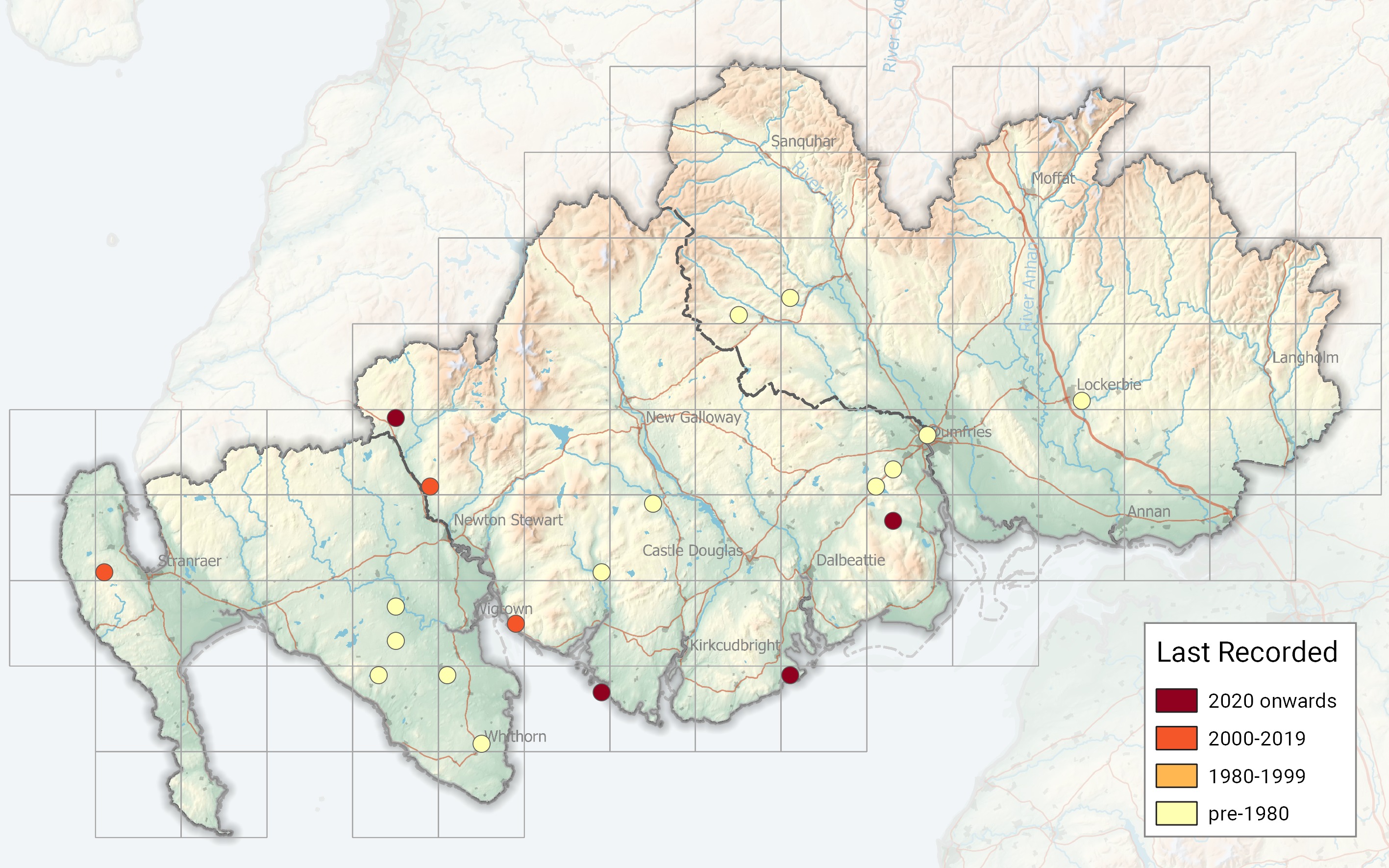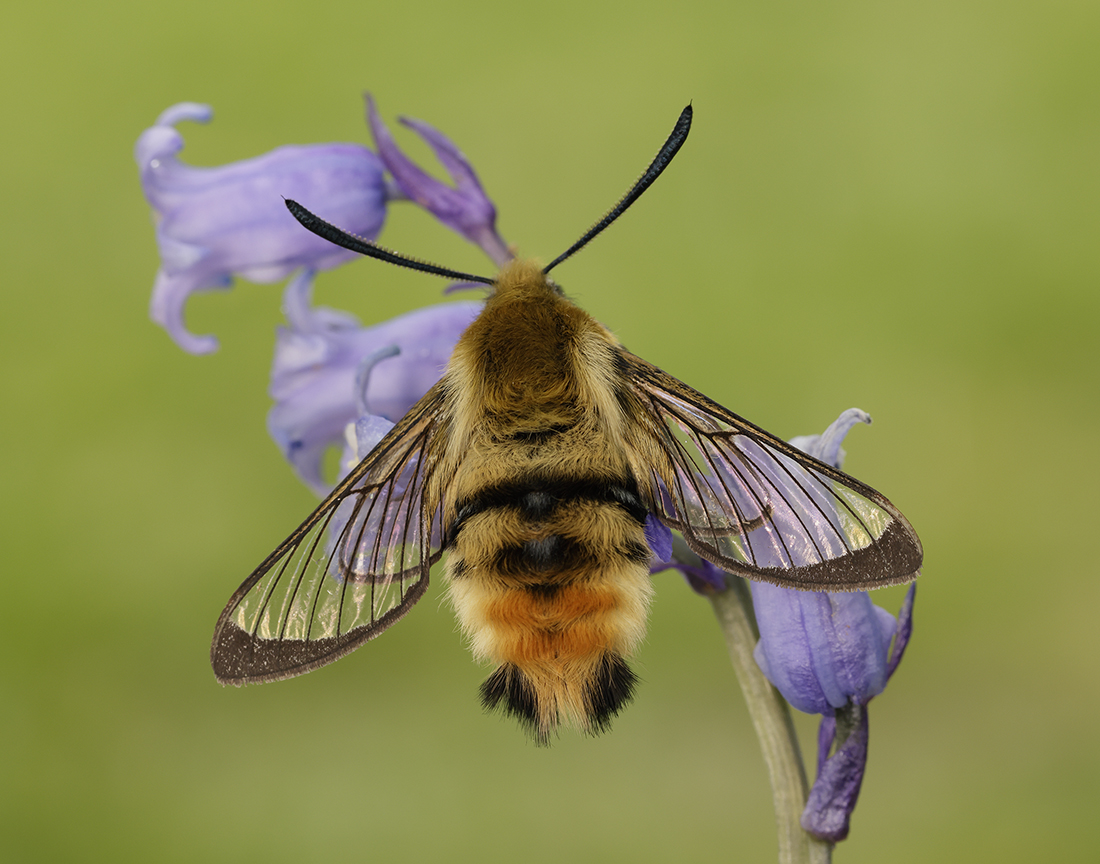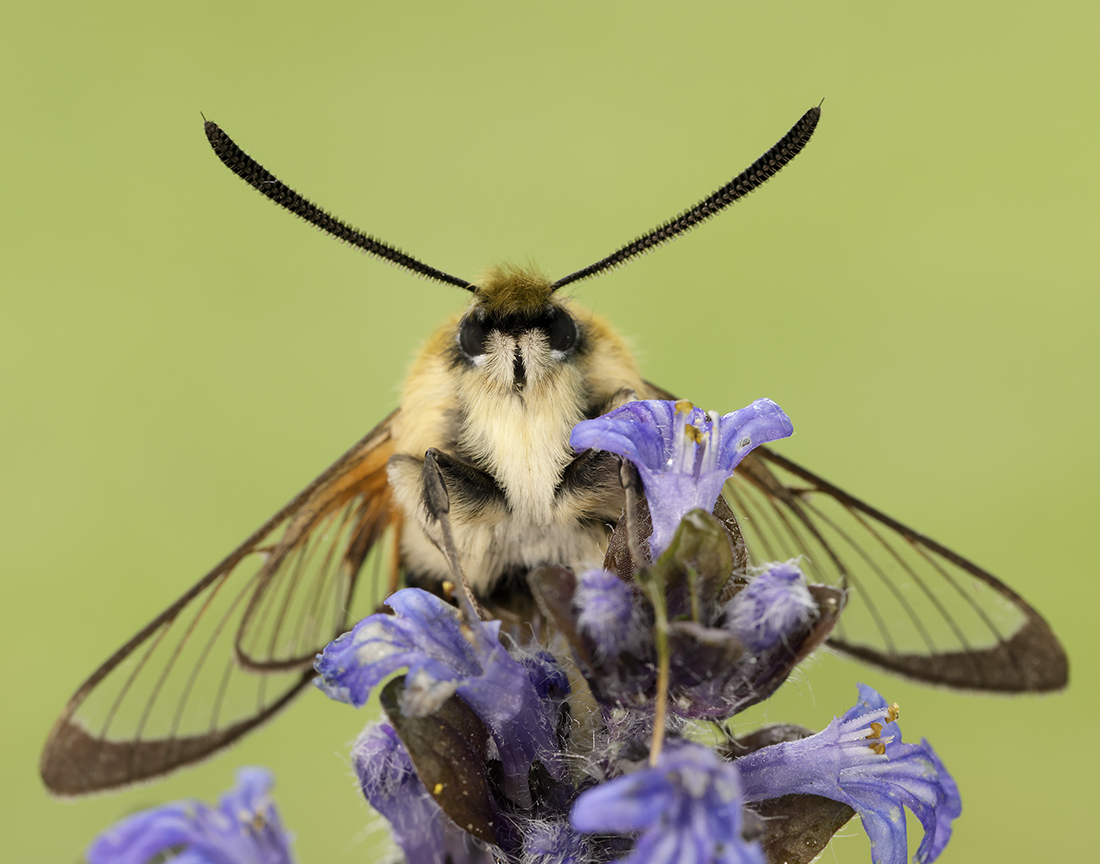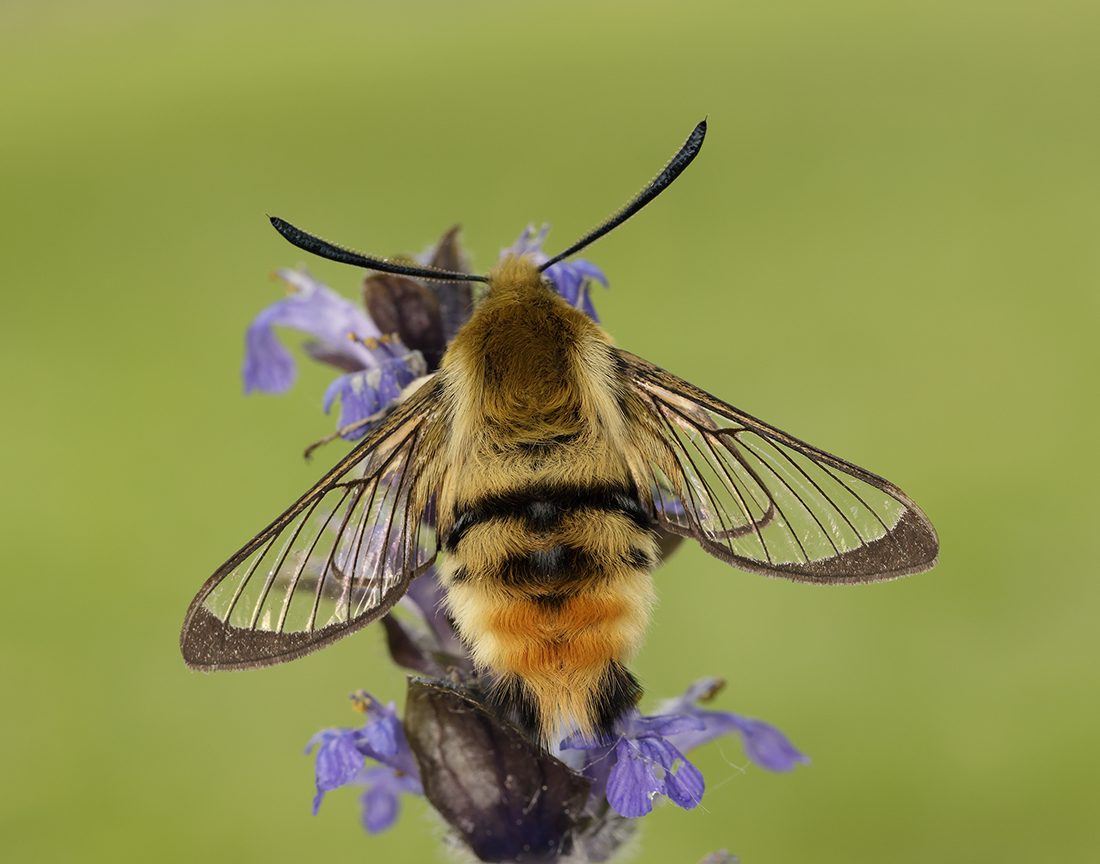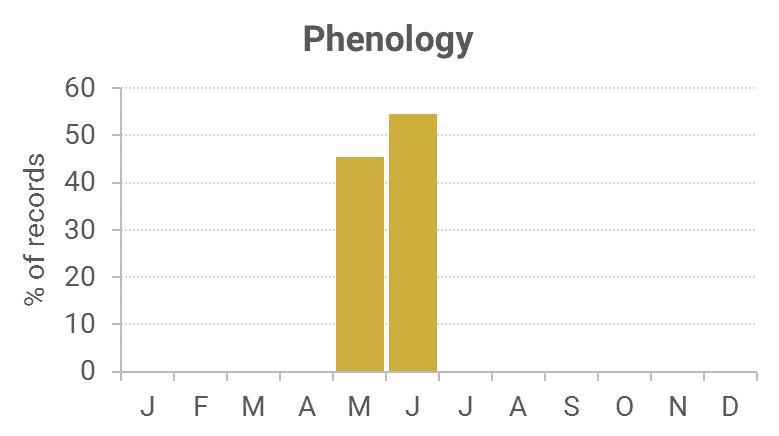See aslo Moth of the Week (16/05/2019)
Identification
Distinctive. Similar to Broad-Bordered Bee Hawkmoth which has not been recorded in Scotland. The main confusion species is perhaps Hummingbird Hawk-moth.
Recording Method
Active by day in sunshine, nectaring and flying rapidly between flowers such as Bugle and Viper’s Bugloss.
Life cycle
Overwinters as a pupa. Larvae are present from mid-June to mid-August in a flimsy cocoon in plant debris, just below the surface.
Larval foodplants
Larvae feed on Devil’s-bit Scabious (sometimes other scabious).
Habitat
Unimproved, often damp, grassland where it feeds at flowers such as Bugle and Bird’s-foot Trefoil.
History
Lennon (1860) stated that he had caught four around Dumfries, and by (1863) had found it to be not common, but had records for Dalskairth and Lochaber in the Mabie Forest (VC73). Gordon (1913) had found it not uncommon, but that it was usually at Rhododendron flowers, from the 5th to the 18th June 1899. He also recorded several at Loch Elrig, Mochrum, and Sunny Braes, Corsemalzie, in late June 1898.
Although he recorded it under the old name of bombyliformis, he also stated ‘narrow border’, there being at the time confusion between the two species, Broad-bordered and Narrow-bordered, which had both used the same scientific name over the years.
Sir Arthur Duncan had found three specimens at Tynron during late May early June 1946, three at National Museums Scotland. Further records came in 1935 and 1939 at Whauphill and Whithorn respectively. Derek Ratcliffe on one of his rambles through southern Scotland had found it at Craigdarroch Wood (VC72) and Castramon Wood (VC73) in 1961. Again, two records in one year, 1978, one in the Lockerbie area, the other on the Loch Stroan railway cutting on 14th June.
In 2004 one was at Kirkmabreck Burn, Carsluith, on 22nd June.

